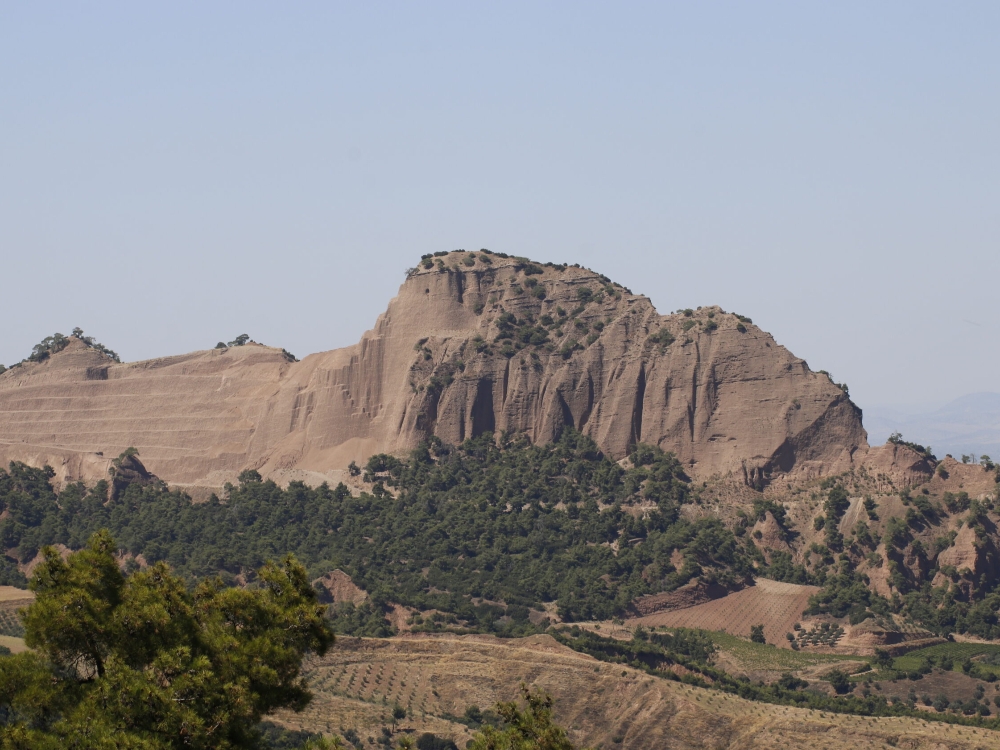Tmolos Deposits

Along the northern foot of the Bozdag Mountains there are fluvial fan deposits, which extend for approximately 110 kilometers in length. These are fan-shaped deposits, which were built up by streams having their sources in the uplifting Bozdağlar Mountains and which flow into the subsiding Gediz Graben. These fan deposits were formed in consequence of the vertical tectonic movements due to the on-going tectonic extension regime which has led to the present geomorphological appearance of western Anatolia. With an approximate north-south width of 3-5 km and a thickness of 400-500 m, these fan deposits began to form in Pliocene period and continued during the Quaternary. These deposits, which are very poorly sorted and generally consist of sand, clay, marl and gneiss, schist, quartzite, and limestone pebbles, are very sensitive to erosion. Widespread erosional features (gully) and landslides are the main characteristics of these deposits. The lower parts of these deposits seem to be eroded by the streams and their upper parts collapse vertically and in consequence they retreat vertically (Parallel slope regression).







